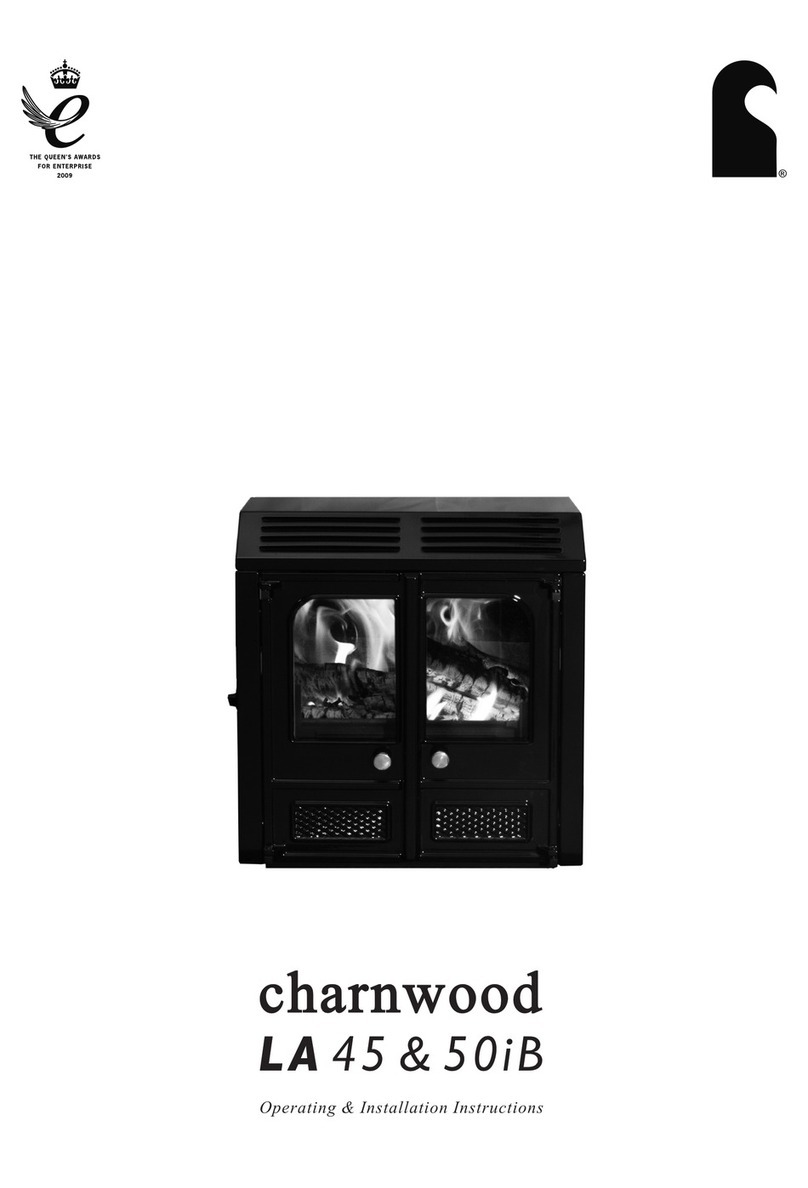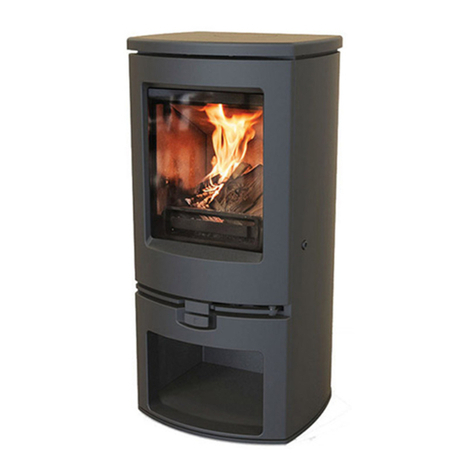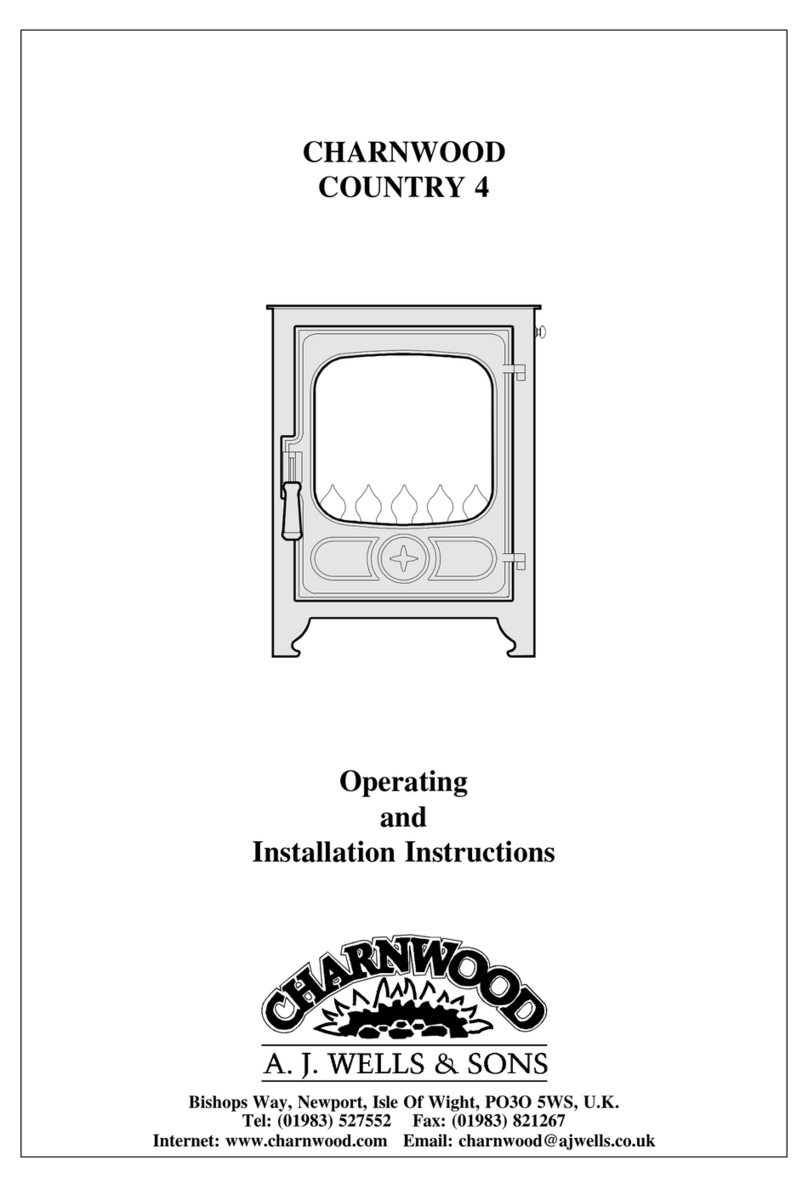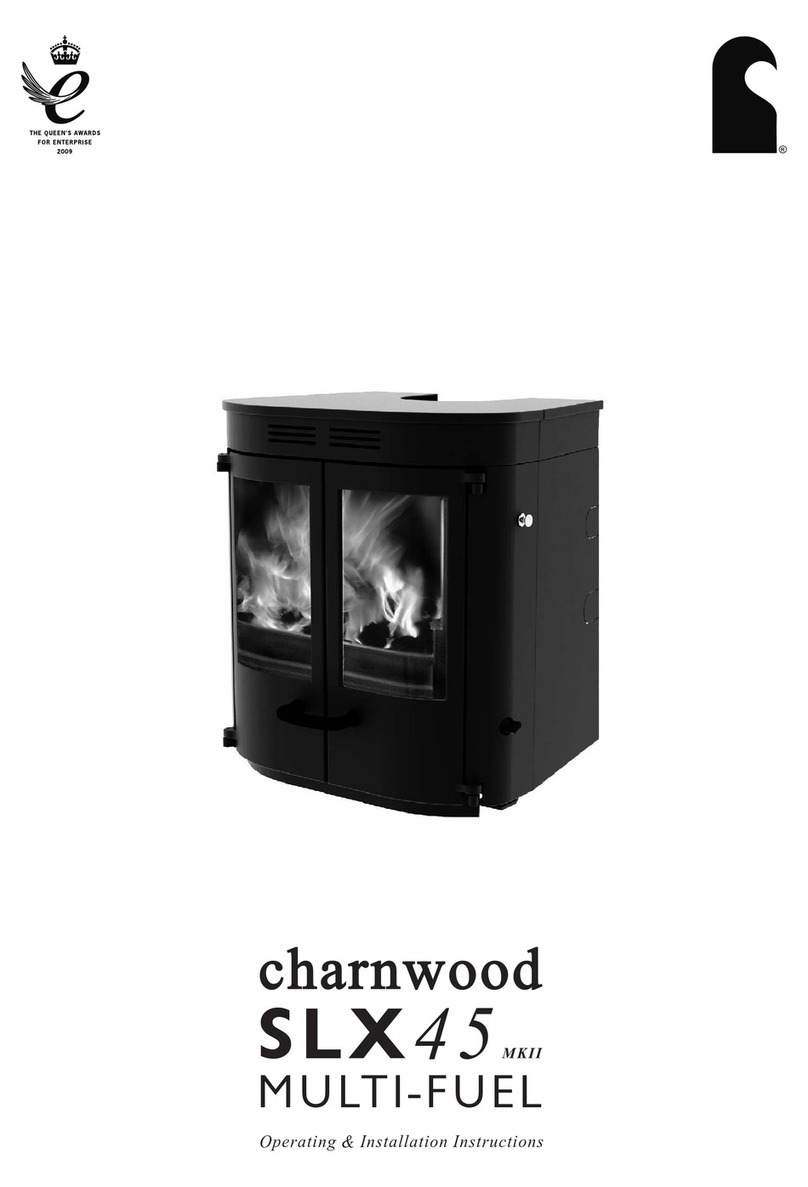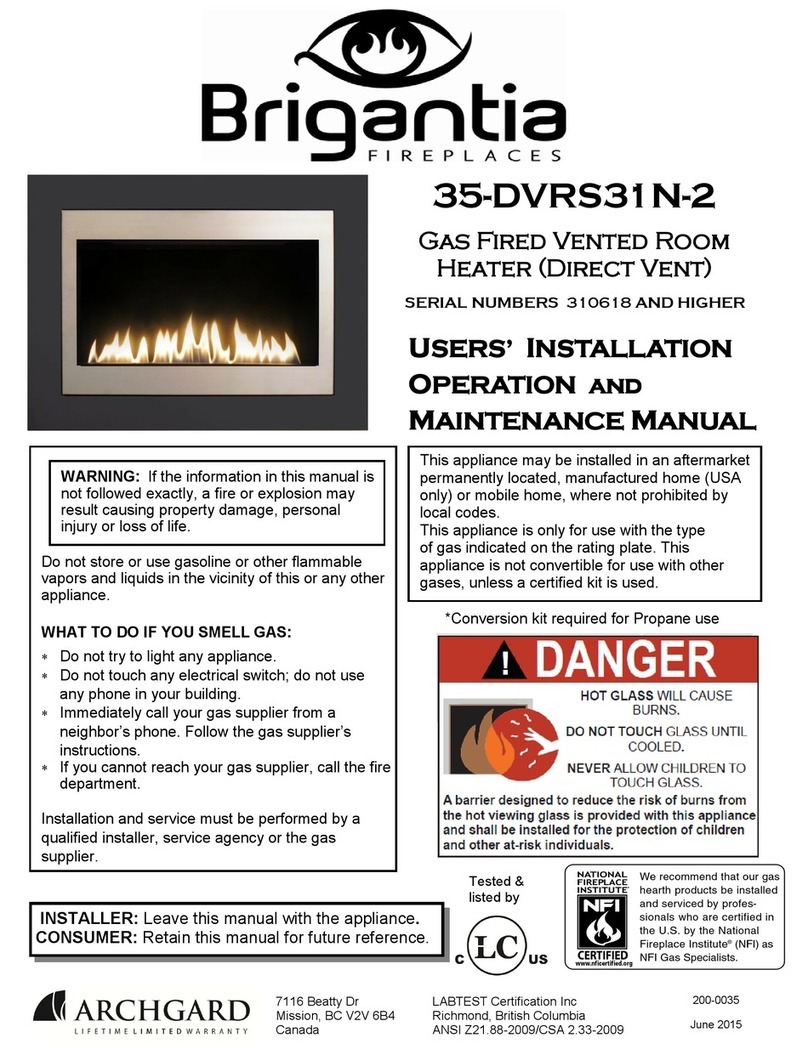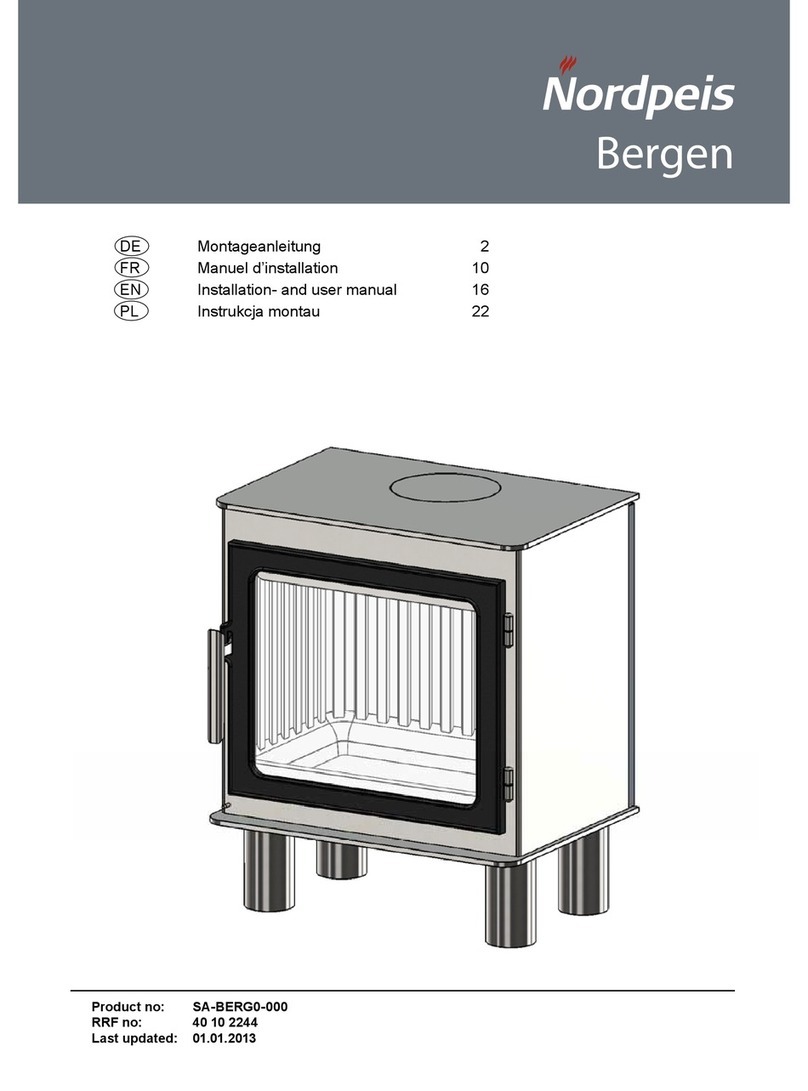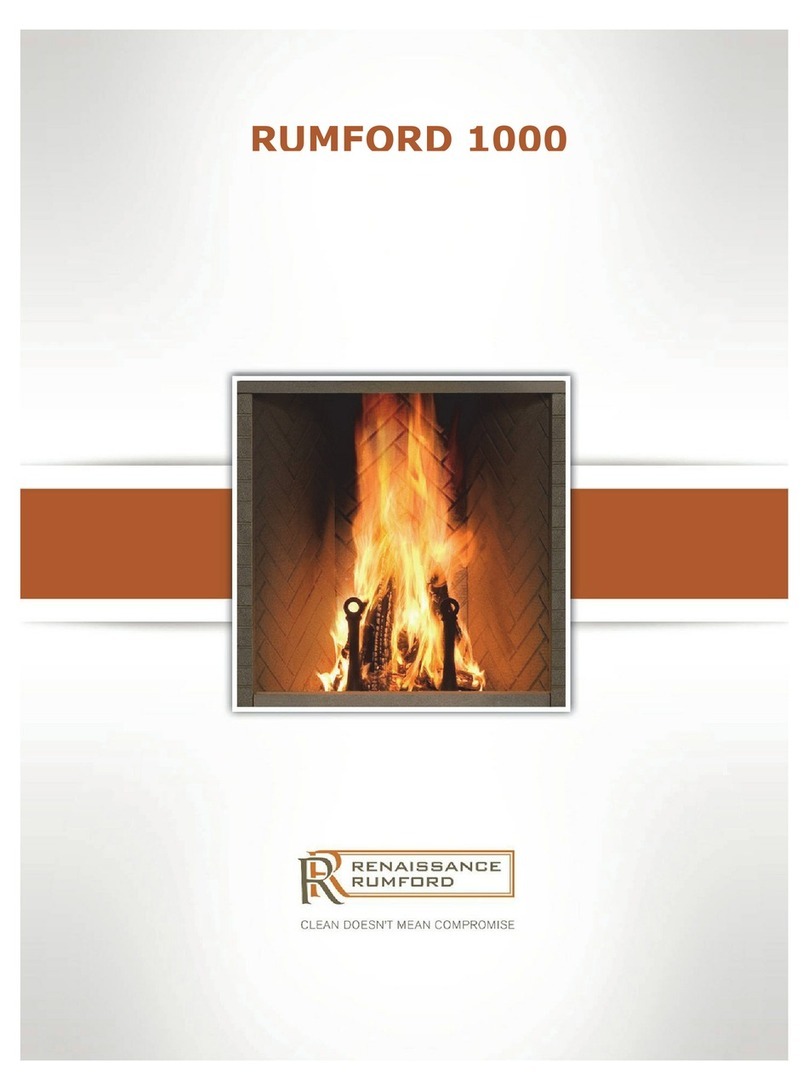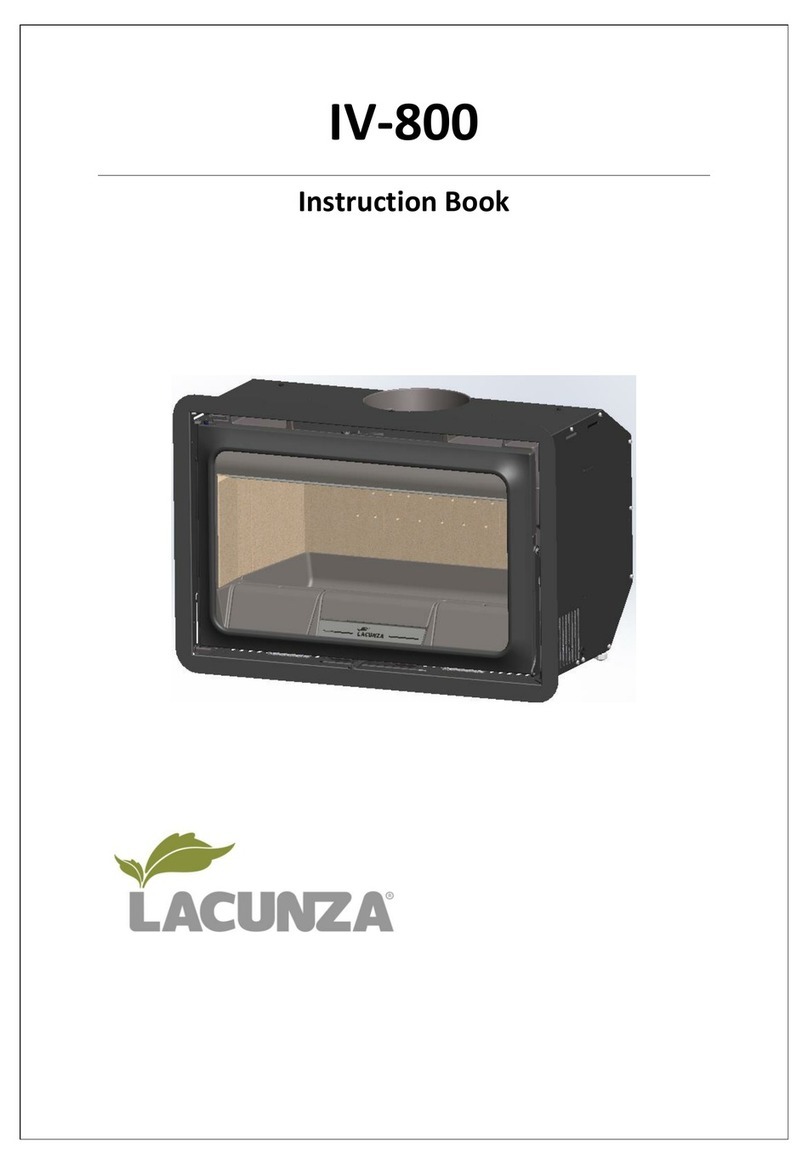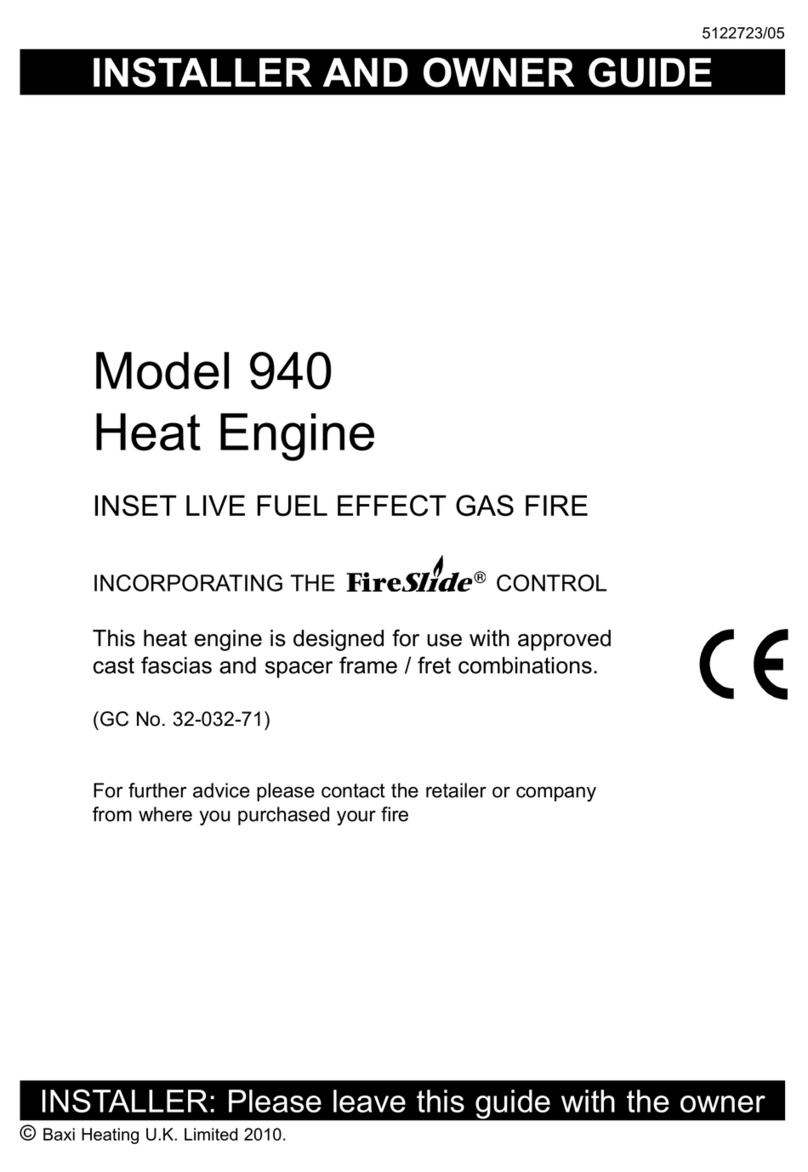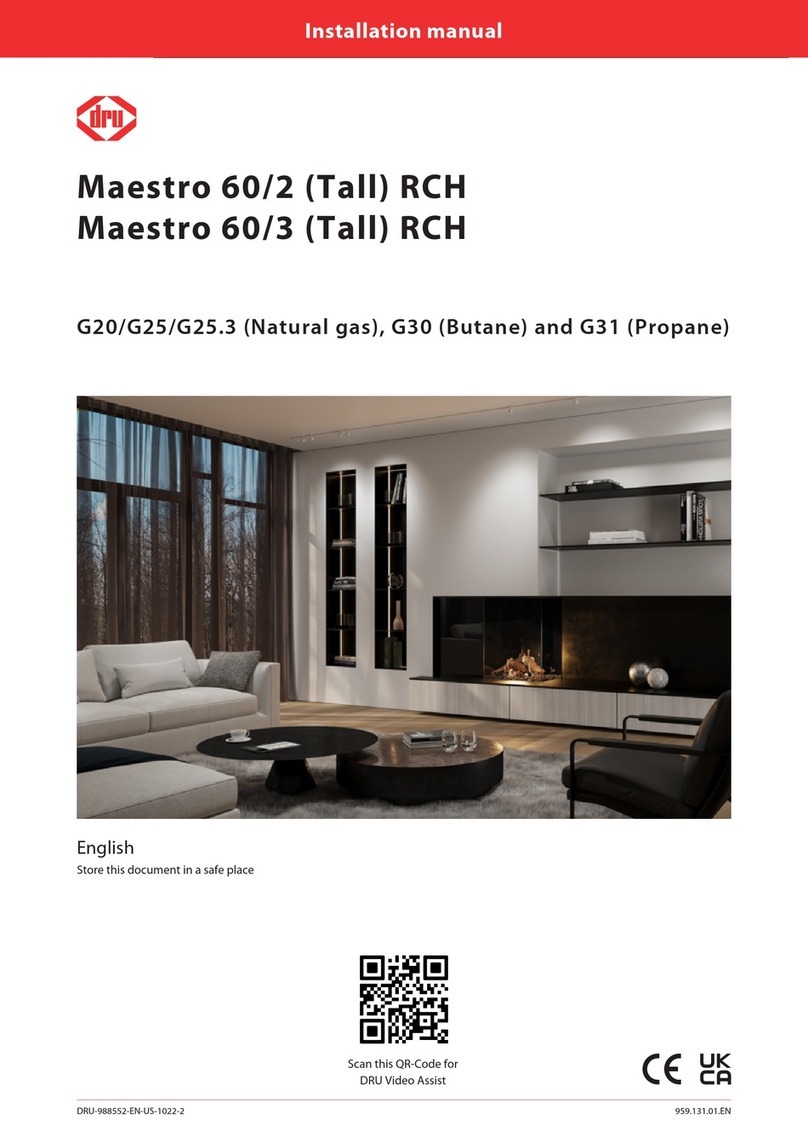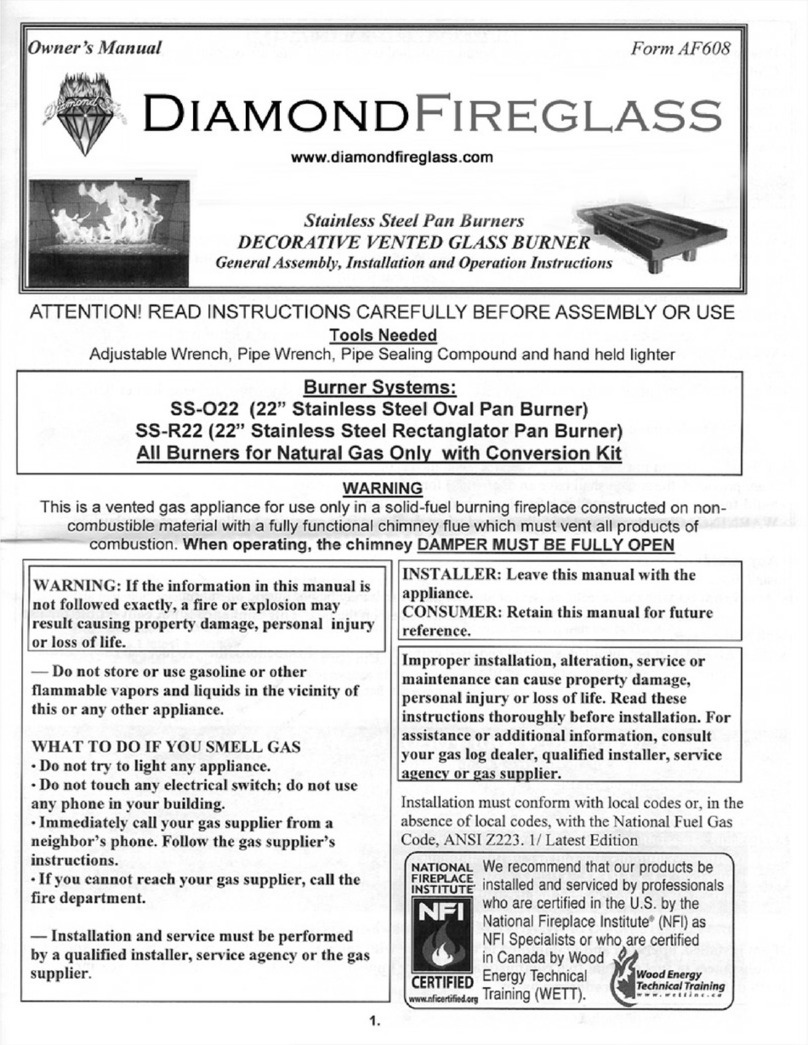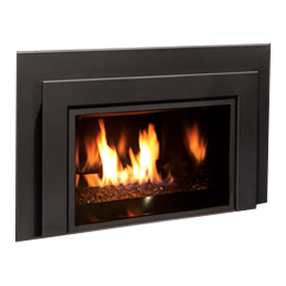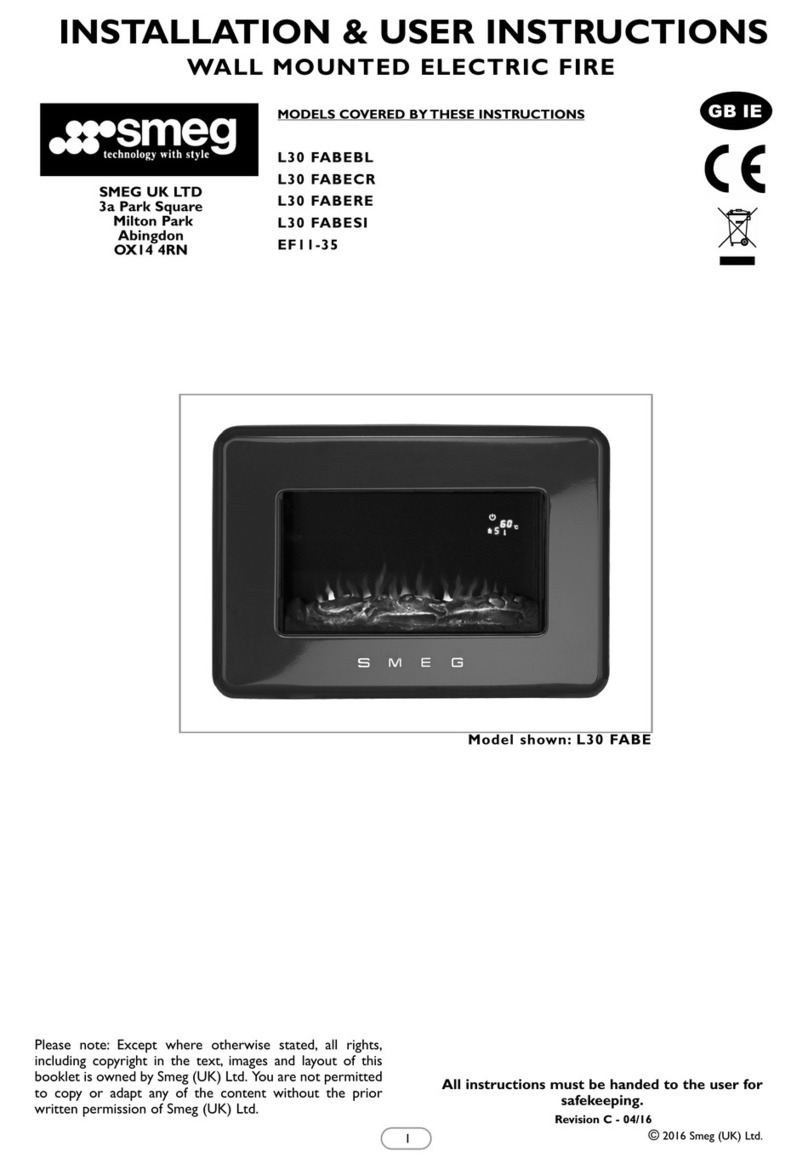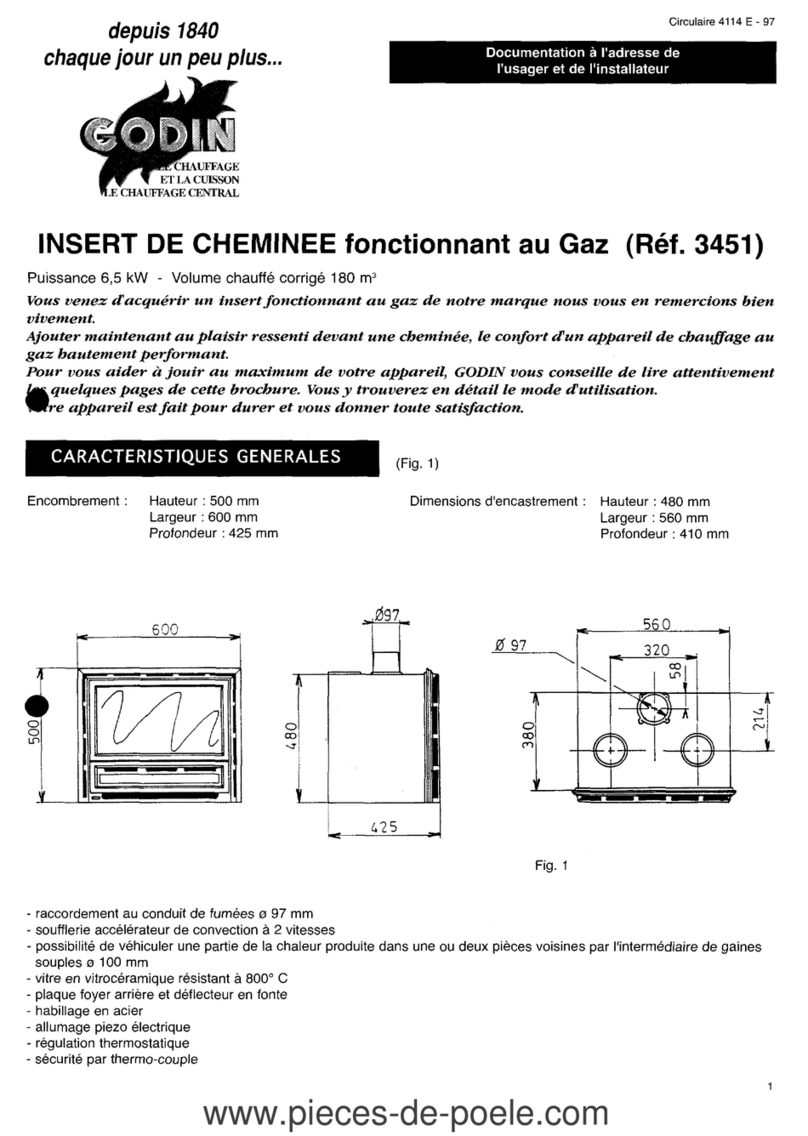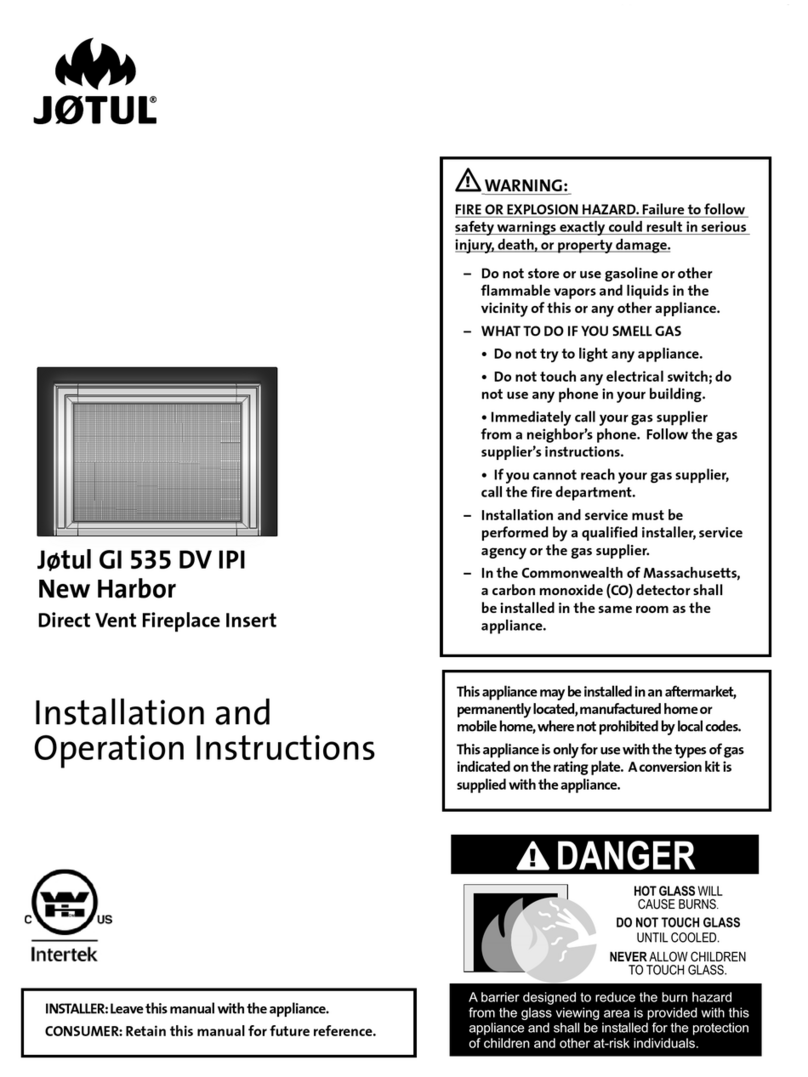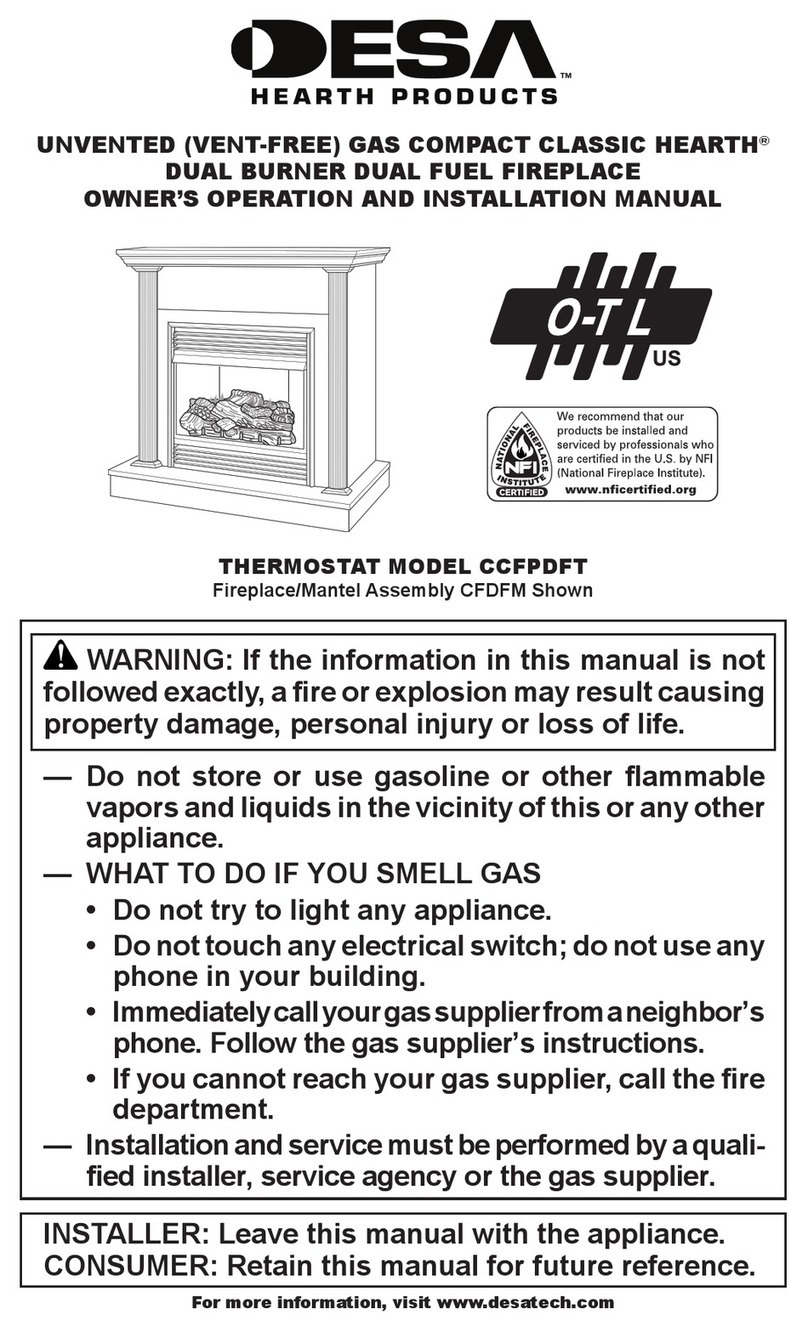horizontal surfaces after sweeping.
In situations where it is not possible to sweep through the
appliance the installer will have provided alternative means,
such as a soot door. After sweeping the chimney the
appliance flue outlet and the flue pipe connecting the
appliance to the chimney must be cleaned with a flue brush.
After clearing any soot from within the fire, replace the throat
plate and the front firebars.
Different types of sweep?s brushes are available to suit
different flueways. For standard brick chimneys a wire centre
sweep?s brush fitted with a guide wheel is recommended. For
prefabricated insulated chimneys the manufacturers
instructions with regard to sweeping should be consulted.
The optional boiler reduction brick may be used when
reduced outputs are required, e.g. during the summer or
when the fire is fitted on to a small heating system.
To fit the brick, let the fire out, clear the grate of any ash and
fuel, and scrape the boiler faces clean. Lift out the deepening
bar and front firebar. Fit the brick into the fire with the thick
part of the brick at the bottom and the sloping face at the
front as shown on the parts list. Push the brick hard up
against the rear face of the boiler. The brick should rest on
the side fireplates and should be clear of the grate bars.
Replace the front firebar and deepening bar.
As the brick is not cemented into position, fitting and
removing it should only take a few minutes.
Check that:
a) the air inlet is not obstructed in any way,
b) chimneys and flueways are clear,
c) a suitable fuel is being used,
d) there is an adequate air supply into the room,
e) an extractor fan is not fitted in the same room as the fire.
Check that:
a) the doors are tightly closed,
b) the thermostat knob is turned down to the minimum
setting,
c) the air inlet damper is closed (at the bottom left of the
appliance, see Fig. 1.), and that it is not prevented from
closing completely by a piece of ash,
d) a suitable fuel is being used,
e) the door seals are in good condition.
BOILER REDUCTION BRICK
TROUBLE SHOOTING
Fire Will Not Burn.
Fire Blazing Out Of Control.
Over-Firing
The appliance is finished in vitreous enamel. To clean the
surfaces simply wipe over with a dry cloth. Abrasive pads and
scouring cleaners must not be used as these will damage the
finish. Care should be taken not to knock the enamel with
hard objects as it will chip.
The glass in the doors is a special ceramic glass which is able to
withstand high temperatures. Before cleaning the glass open
the doors and allow them to cool. Clean the glass using a
damp cloth and then wiping over with a dry cloth. Any
stubborn deposits on the glass may be removed with a
proprietary stove glass cleaner or ceramic hob cleaner. Some
deposits on the glass may be burnt off simply by running the
fire at a fast rate for a few minutes. Do not use abrasive
cleaners or pads as these can scratch the surface which will
weaken the glass and cause premature failure. Aerosol spray
cleaners should not be used near the appliance whilst it is
under fire.
If the fire is going to be out of use for a long period, (for
instance in the summer,) then to prevent condensation, and
hence corrosion, the thermostat should be left at the
maximum setting and the main doors left ajar. It is also
advisable to sweep the chimney and clean out the fire.
Spraying the inside of the doors and firebox with a light oil,
such as WD40, will also help to keep all internal parts working
well.
After long periods where the fire has been out of use, the
chimney and appliance flueways should be cleaned before
lighting.
For the fire to operate correctly it is important that the door
seals are in good condition. Check that they do not become
worn or frayed and replace them when necessary.
It is recommended that the fire is serviced once a year to keep
it in first class working order. After cleaning out the firebox
thoroughly, check that all internal parts are in good working
order, replacing any parts that are beginning to show signs of
wear. Check that the doors seals are in good condition and
that the doors seal correctly. Check the operation of the
thermostat, both when cold and hot. A servicing guide, TIS
48. is available on request.
The chimney should be swept at least twice a year. In most
installations it will be possible to sweep the chimney through
the appliance.
First remove the front firebars and the throat plate. Then
sweep the chimney ensuring that soot is removed from all
Cleaning the Glass
When not in use
Door Seals
Servicing
CHIMNEY SWEEPING
7
®
OPERATING INSTRUCTIONS charnwood





